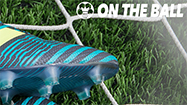4 common soccer injuries
April 21, 2020

Soccer injuries are quite common and can keep players out for a minimum of one game, up to an entire year, or can lead to players having to withdraw from the game entirely. OnTheBall is dedicated to teaching you not only about the best Online soccer practice techniques but also about the injuries that players can get and the best way to prevent them.
- Injuries to the head. Unlike many sports, the head in soccer is a tool
- Head injuries stem from a collision with the elbows, arms, and legs of other players. Head injuries include the mouth, nose, and eyes, but are less severe. The injuries that most concern players, coaches, and parents are concussions. In the past, a lot of research has been done to determine if brain damage can be caused by handling a soccer ball. No research so far has 100% shown that directing a soccer ball can cause brain damage.
- The more you train to hit the ball properly, the easier it will get, though kids will complain that it hurts at first! - The participant is allowed to continue a soccer game if a participant has an injury unless it causes a headache.
- When treating a participant who has a head injury, be careful not to pick him up or move him quickly because he may also have a neck or back accident.
- Muscle stretches on the leg.
- This is a common accident that can result from a lack of stretching before the game. A pull on the crotch is an injury that occurs to the inner thigh muscles. These muscles help bring the legs together and can also cause problems with the hip joint. Click here! - Hamstring injuries - The most talked about football injuries! A hamstring strain or strain is once again related to more than one of the muscles that are tearing.
- Sudden, sharp pain in the back of the leg during soccer, most likely during sprinting or high-speed movements. Most muscle strains usually have a criterion of 3 degrees, with 1 being mild and 3 being more severe. Soccer injuries to the hamstrings can keep players out of the game for months. Treatment for a hamstring strain should begin immediately.
- Ankle sprain
- An ankle sprain is the most common injury among male soccer players, accounting for 17% of all injuries in both games and practices. Ankle sprains often occur when you make a sudden stop or change direction, causing your ankle to twist unnaturally.
- One of the factors to avoid ankle injuries is soccer shoes with appropriate soccer cleats suitable for the field of play. A soccer shoe that adapts well to your foot, and that gives you stability and grip, will prevent injuries from slipping or from unsafe footsteps.
- Ankle sprains can generally be treated by following the RICE protocol (rest, ice, compression, elevation). However, ankles that have not fully healed are vulnerable to sprains.
- Injuries to the muscular tendon of the hip or pelvis. Due to the complex anatomy of this part of the body, soft tissue injuries of the hip and pelvis are often described under the general label of sports hernia (sports pubalgia).
- Knee injuries
- These include tears in ligaments such as the anterior cruciate ligament (ACL) or the meniscus. The constant sudden movements of acceleration and braking represent a constant overload on the muscles and ligaments. A good stretching and warm-up session before a game or online training session are vital to avoid these types of painful injuries.
The most important thing when playing, warming up before a game or training at home with an online training application such as OnTheBall, is that you do it with professional coaches or professional soccer players who adequately guide you on the best warm-up exercises and training to avoid injury.
Sometimes it is necessary to rest and not contribute to overuse injuries to lengthen the lifetime of your muscles and joints.
Improve your soccer skills safely, log into OnTheBall, follow our experts from the best soccer training app and enjoy a good time in the soccer field!
Popular Blogs















.png)